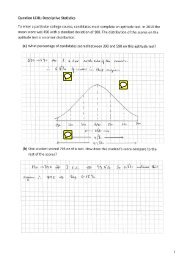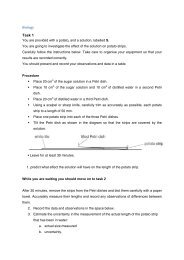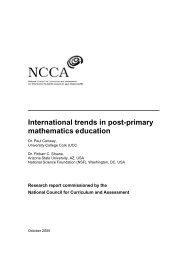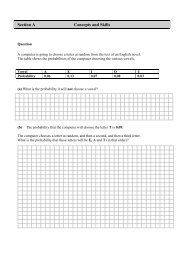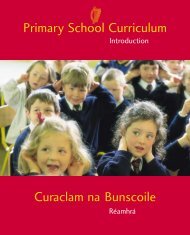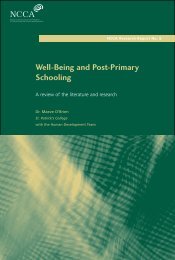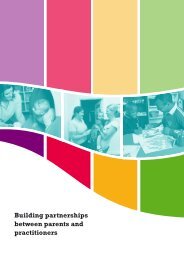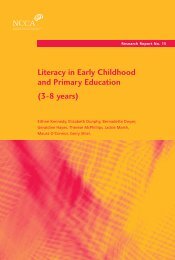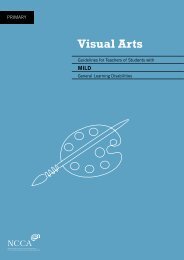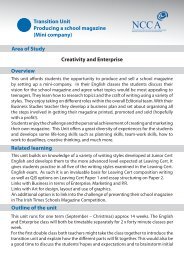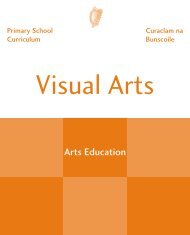Up and Away - National Council for Curriculum and Assessment
Up and Away - National Council for Curriculum and Assessment
Up and Away - National Council for Curriculum and Assessment
Create successful ePaper yourself
Turn your PDF publications into a flip-book with our unique Google optimized e-Paper software.
66<br />
Twenty questions (speaking – asking questions <strong>and</strong> responding, revising vocabulary)<br />
Suitable <strong>for</strong> Young pupils <strong>and</strong> older pupils with low proficiency level.<br />
Resources Selection of picture or word cards.<br />
Method<br />
Choose one card <strong>and</strong> show it to one pupil.<br />
Check that he/she underst<strong>and</strong>s.<br />
Hide the card in a box.<br />
The other pupils ask questions in turn. Encourage them to use all the vocabulary that they know – e.g.<br />
‘Is it an animal?’, ‘Is it big?’, ‘Does it have four legs?’, etc.<br />
The first child can only reply ‘Yes’ or ‘No’.<br />
Pupils get a point if they are the first to identify the word. If nobody guesses after twenty<br />
questions, the pupil who picked the word gets a point.<br />
Take it away (speaking – descriptions, introducing or revising vocabulary)<br />
Suitable <strong>for</strong> Young pupils <strong>and</strong> older pupils with low proficiency level.<br />
Resources Picture or word cards from a particular category.<br />
Method<br />
Display four cards on the board.<br />
Discuss the pictures.<br />
Remove the pictures, shuffle them <strong>and</strong> put three back in a different order.<br />
Pupils identify which one has been taken away.<br />
Passwords (introducing vocabulary)<br />
Suitable <strong>for</strong> Young pupils <strong>and</strong> older pupils with low proficiency level.<br />
Resources Picture or word cards, or other prompts.<br />
Method<br />
Each day a ‘special’ word is introduced relevant to the unit of work being studied.<br />
Pupils must remember this ‘password’ to enter the language support classroom the following day.<br />
Sorting <strong>and</strong> making a chart (speaking, learning vocabulary -– categorising)<br />
Suitable <strong>for</strong> Young pupils <strong>and</strong> older pupils with low proficiency level.<br />
Resources Large selection of picture or word cards.<br />
Method<br />
The pupils work to categorise the cards according to themes (food, clothes, animals, etc.).<br />
They then arrange the cards in the <strong>for</strong>m of a bar chart using the categories as column headings.<br />
Display the bar chart <strong>and</strong> use it to rein<strong>for</strong>ce vocabulary.<br />
Note! Blank charts made up of plastic pockets can be used <strong>for</strong> a variety of themes. Pupils put the<br />
relevant cards into the pockets during activities.



